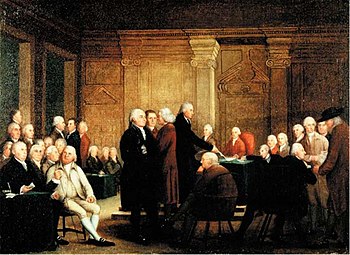
Samuel Harding (died 1758) was an American cabinetmaker, remembered for his Queen Anne style furniture and for the interior architectural ornament of Independence Hall, in Philadelphia, Pennsylvania, United States.

Samuel Harding (died 1758) was an American cabinetmaker, remembered for his Queen Anne style furniture and for the interior architectural ornament of Independence Hall, in Philadelphia, Pennsylvania, United States.
Builder-architect Edmund Woolley (c. 1695-1771) began construction of the Pennsylvania State House (now Independence Hall) in 1732, and completed the building by 1748. [1] The project's carvers were listed as Harding and Bryan Wilkinson. [2]
The original staircase in the vestibule proved inadequate for so large a building, and a tower addition with a new staircase was proposed. [3] The tower's foundations were laid in 1750, and its exterior construction was completed by 1753. Between 1753 and 1756, Harding executed (and probably designed) the interior architectural ornament for the tower stair hall and a remodeled vestibule. His bill listed all of the fixtures for the mahogany staircase, along with moldings, pediments, column capitals, tabernacle frames, and two keystones with carved "faces" – for which he charged £195.13.11. [4] The bill was paid in part in 1757, and in full in 1758 (possibly, not until after his death).
He carved ionic capitals for what he called the "green room" (thought to be the Assembly Room), [5] but it is unclear when the shell frieze within the room's tabernacle frame was carved—by Harding in the 1750s, or by Harding and/or Wilkinson in the 1740s.
A 54-foot giant tall clock by Thomas Stretch stood against Independence Hall's exterior from 1753 to 1828. Harding carved the 14-foot wooden bonnet that surrounded its face.
| Ground floor of Independence Hall (right-click links below for room images)
|
Furniture expert Luke Beckerdite calls Harding "one of the most important carvers active in Philadelphia during the first half of the eighteenth century." He conjectures that the carver Nicholas Bernard either was trained or influenced by him. [19]
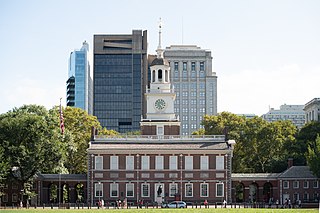
Independence Hall is a historic civic building in Philadelphia, where both the United States Declaration of Independence and the United States Constitution were debated and adopted by America's Founding Fathers. The structure forms the centerpiece of the Independence National Historical Park. Independence Hall was named to the National Register of Historic Places in 1966 and as a World Heritage Site in 1979.

William Rush was a U.S. neoclassical sculptor from Philadelphia, Pennsylvania. He is considered the first major American sculptor.

Congress Hall, located in Philadelphia at the intersection of Chestnut and 6th Streets, served as the seat of the United States Congress from December 6, 1790, to May 14, 1800. During Congress Hall's duration as the capitol of the United States, the country admitted three new states, Vermont, Kentucky, and Tennessee; ratified the Bill of Rights of the United States Constitution; and oversaw the presidential inaugurations of both George Washington and John Adams.

The State Dining Room is the larger of two dining rooms on the State Floor of the Executive Residence of the White House, the home of the president of the United States in Washington, D.C. It is used for receptions, luncheons, larger formal dinners, and state dinners for visiting heads of state on state visits. The room seats 140 and measures approximately 48 by 36 feet.
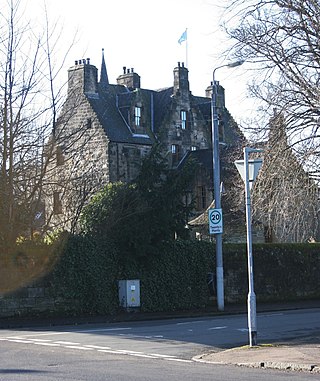
Haggs Castle is a 16th-century tower house, located in the neighbourhood of Pollokshields, in Glasgow, Scotland. The richly decorated building was restored in the 19th century, and today is once more occupied as a residence.

The Powel House is a historic house museum located at 244 South 3rd Street, between Willings Alley and Spruce Street, in the Society Hill neighborhood of Philadelphia, Pennsylvania. Built in 1765 in the Georgian style, and embellished by second owner Samuel Powel (1738–1793), it has been called "the finest Georgian row house in the city." As with other houses of this type, the exterior facade is understated and simple, but the interior was elaborately appointed.

Edmund Woolley (c.1695—1771) was an English-born American architect and master carpenter, best known for building Independence Hall in Philadelphia, Pennsylvania, United States.
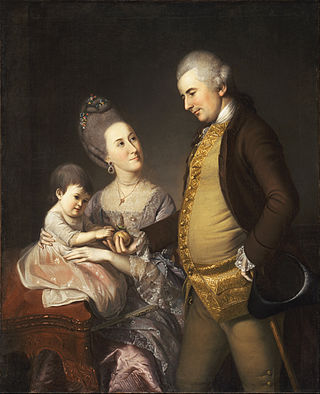
Thomas Affleck (1740–1795) was an 18th-century American cabinetmaker, who specialized in furniture in the Philadelphia Chippendale style.

Nunnington Hall is a country house situated in the English county of North Yorkshire. The river Rye, which gives its name to the local area, Ryedale, runs past the house, flowing away from the village of Nunnington. A stone bridge over the river separates the grounds of the house from the village. Above, a ridge known as Caulkley's Bank lies between Nunnington and the Vale of York to the south. The Vale of Pickering and the North York Moors lie to the north and east. Nunnington Hall is owned, conserved and managed as a visitor attraction by the National Trust.

The art collection of Holkham Hall in Norfolk, England, remains very largely that which the original owner intended the house to display; the house was designed around the art collection acquired by Thomas Coke, 1st Earl of Leicester, during his Grand Tour of Italy during 1712–18. To complete the scheme it was necessary to send Matthew Brettingham the younger to Rome between 1747 and 1754 to purchase further works of art.

Daniel Pabst was a German-born American cabinetmaker of the Victorian Era. He is credited with some of the most extraordinary custom interiors and hand-crafted furniture in the United States. Sometimes working in collaboration with architect Frank Furness (1839–1912), he made pieces in the Renaissance Revival, Neo-Grec, Modern Gothic, and Colonial Revival styles. Examples of his work are in the collections of the Metropolitan Museum of Art, the Philadelphia Museum of Art, the Art Institute of Chicago, and the Victoria and Albert Museum in London.

The Diplomatic Reception Rooms at the U.S. Department of State constitute forty-two principal rooms and offices where the secretary of state conducts the business of modern diplomacy. Located on the seventh and eighth floors of the Harry S Truman Building in Washington, D.C., the diplomatic reception rooms contain one of the nation’s foremost museum collections of American fine and decorative arts.

Joseph Alexis Bailly was an American sculptor who spent most of his career in Philadelphia, Pennsylvania. He taught briefly at the Pennsylvania Academy of the Fine Arts, which has a collection of his sculpture. His most famous work is the statue of George Washington in front of Independence Hall.

Two Temple Place, known for many years as Astor House, is a Neo-Gothic building situated near Victoria Embankment in central London, England. It is known for its architecture, and contains notable works by the likes of William Silver Frith, Sir George Frampton, Nathaniel Hitch and Thomas Nicholls.

From 1868 until his death in 1899,The Oaks was the home of Major Jedediah Hotchkiss. Hotchkiss made his mark in a number of fields including mapmaking, surveying, land and coal speculation, and education. During the Civil War, Hotchkiss first served under Gen. Robert E. Lee as topographical engineer, and then joined Gen. Stonewall Jackson's staff in the same capacity, soon becoming one of the General's closest aides. His campaign maps, now housed at the Library of Congress, are considered by Civil War historians to be among the finest ever made. Hotchkiss returned to Staunton after the war ended and began speculating in land and minerals. He also lectured and wrote extensively about Virginia's geology, geography, and Civil War history.
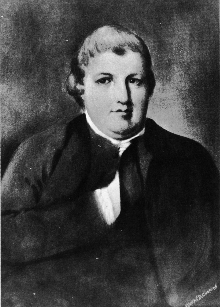
Thomas Stretch was an American clockmaker and a founder and first governor of the Colony in Schuylkill, later known as the State in Schuylkill, or Schuylkill Fishing Company. In 1753, he erected the first clock at Independence Hall in Philadelphia, a large clock dial and masonry clock case at the west end of the structure.
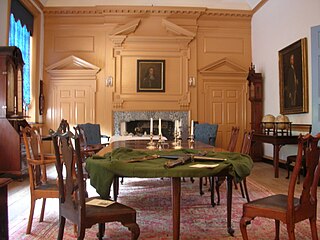
William Savery was an 18th-century American cabinetmaker noted for his furniture in the Queen Anne and Philadelphia Chippendale styles.
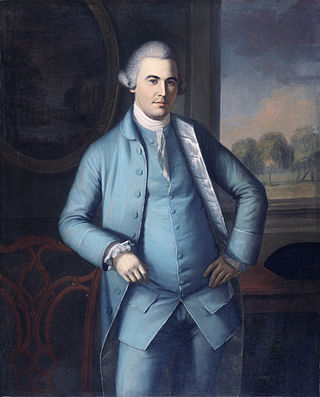
Benjamin Randolph (1721—1791) was an 18th-century American cabinetmaker who made furniture in the Queen Anne and Philadelphia Chippendale styles. He made the lap desk on which Thomas Jefferson drafted the Declaration of Independence.

Edward Maene was a Belgian-American architectural sculptor, woodcarver and cabinetmaker.

The Edward Brooke II Mansion (1887–88), also known as "Brookeholm," is a Queen Anne country house at 301 Washington Street in Birdsboro, Pennsylvania. Designed by architect Frank Furness and completed in 1888, it was Edward Brooke II's wedding present to his bride, Anne Louise Clingan.